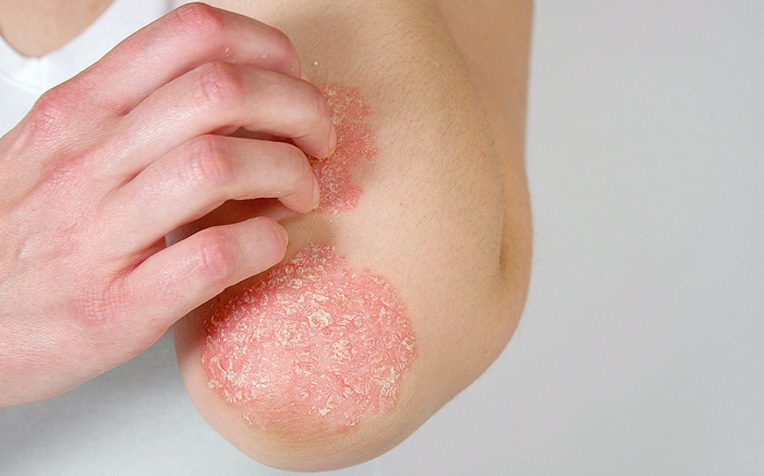
29 October marks World Psoriasis Day.
Psoriasis: A chronic skin condition characterised by thick red patches with flaky silvery scales
In Singapore, an estimated 40,000 people suffer from the disease, according to the Psoriasis Association of Singapore.
Psoriasis can affect men, women and children at any age, though it has been found to be more common between the ages of 15 to 45.
Psoriasis can be mistaken for dandruff when occurring on the scalp. Besides the scalp, psoriasis can affect any part of the skin, in particular the knees, elbows, hands, feet and lower back. In severe cases, the patches can be accompanied by painful joint swelling as well as joint disfigurement.
“Psoriasis patches can range from minor dandruff-like scaling to major eruptions covering large areas of skin,” says
Associate Professor Pang Shiu Ming, Senior Consultant from the
Department of Dermatology at
Singapore General Hospital (SGH), a member of the
SingHealth group.
“In its severe form, psoriasis can be incapacitating, significantly affecting the patient’s quality of life. On rare occasions, very severe psoriasis can be life-threatening.”
Read more: How to prevent psoriasis flare-ups
Psoriasis symptoms
Most psoriasis patients have mild to moderate symptoms which are likely to wax and wane, appearing and disappearing in cycles. Psoriasis symptoms may flare up for a few weeks or months and then disappear for some time, even going into remission for some years. However, in most cases, the psoriasis symptoms do eventually recur.
A small number of patients suffer from the severe and persistent form of the skin disease.
Mild and moderate psoriasis symptoms include:
Severe psoriasis symptoms include:
Inflamed and itchy patches covering large areas of skin
Stiff, swollen and painful joints
Disfigured joints, commonly fingers and toes
Thickened, discoloured nails which may separate from the nail beds
Types of psoriasis
The most common type of psoriasis is plaque psoriasis, in which patches can occur anywhere on the body. Other common types include nail psoriasis and scalp psoriasis.
Less common types include guttate psoriasis; localised pustular psoriasis; acropustulosis, palmoplantar pustulosis, palmoplantar psoriasis; and inverse or flexural psoriasis. Erythrodermic psoriasis and generalised pustular psoriasis (Von Zumbusch) are life-threatening forms of psoriasis.
In psoriatic arthritis, the joints become painful and swollen.
Read more:
Arthritis - Causes and early signs
Causes and triggers of psoriasis
Psoriasis is believed to be caused by a
combination of genetic and environmental factors which affect the body’s immune system, causing its T-cells to attack healthy skin cells.
“A family history of psoriasis puts you at greater risk of getting the disease,” says Assoc Prof Pang.
The disease occurs when skin cells multiply rapidly, replacing old skin cells over 3-4 days instead of the normal 3-4 weeks. This rapid multiplication causes the cells to build up on the surface of the skin, forming thick patches.
While the exact cause of psoriasis is unknown, the following factors have been found to be triggers for the disease:
Skin or nail injury
Stress and anxiety
Infections such as a streptococcal (bacterial) throat infection
Certain medications such as antimalarial drugs or lithium
Exposure to cold
Overweight and obesity
Excessive alcohol consumption
Smoking
“Smoking is a risk factor for psoriasis and has also been found to increase the severity of symptoms,” adds Assoc Prof Pang.
Read more:
Eczema relief - Treatment and tips to prevent itching
--
Articles on
HealthXchange.sg are meant for informational purposes only and cannot replace professional surgical, medical or health advice, examination, diagnosis or treatment. Photo courtesy of iStock.